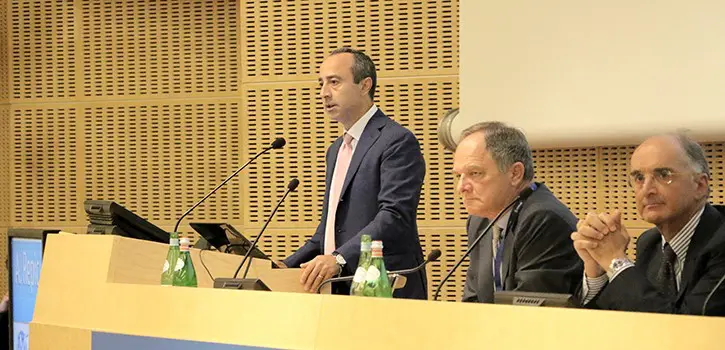Over 700 gastroenterologists and endoscopists from 12 countries in the world. These are the numbers Image , international event dedicated to ‘ endoscopy taking officially start today, Thursday June 18 . Among the novelties presented during this edition, “technology SpyGlass DS ” that used for the diagnosis and treatment of liver cancer and intrahepatic stones, allows access to the biliary tract endoscopically, saving in some cases the need for surgery . The event is coordinated by dr. Alessandro Repici , Director of Endoscopy of Humanitas.
What is Image? What are the main novelties of this edition?
Inaugurated today the sixth edition of Image (International Meeting Advanced Gastroenterology Endoscopy), which brings together the community of Italian and foreign gastroenterologists and endoscopists for two days of debate and confrontation with some top international experts in the field. The event is characterized by the opportunity to attend live sessions and take stock of the most important technological innovations and treatment with minimally invasive approach for gastroenterological diseases.
Among the innovations being presented in this edition there are, in particular, the presentation of technology SpyGlass DS and the device Hot Axios .
SpyGlass DS, the new display system for the diagnosis and treatment of pancreatic-biliary diseases
SpyGlass DS is a new display system for the diagnosis and treatment of pancreatic-biliary diseases . This procedure, used to carry out thorough investigations of cholangioscopy and pancreatoscopia, allows to accurately detect liver disease, biliary tract, gallbladder and pancreas. Marketed by Boston Scientific , SpyGlass DS was used for the first time in Italy by practitioners of Humanitas. The system consists of the SpyDS controller and a SpyScope disposable catheter to ensure maximum safety and the best image quality. The digital sensor allows doctors to frame perfectly the areas to be analyzed, thanks to a magnification of the field of view greater than 60% compared to currently available systems, detect anomalies, take biopsy samples or guide interventions for the care of the calculations.
Hot Axios, the device for drainage of pancreatic fluid guided endoscopic ultrasonography
Used in only 5 centers throughout Italy, Hot Axios is the first device that allows the endoscopic drainage of pancreatic pseudocysts and collected abdominal no need to subject the patient to X-rays, but by calling in endoscopic ultrasound. “The drainage of fluids and pancreatic materials – explains Dr. Repici – happens so without the necessary step of the surgery and, thanks endoscopic ultrasound, allows you to treat these diseases with ever less invasive approach.”
Training and live surgery: Radiofrequency ablation, mucosectomie and submucosal dissections
During Image, theoretical lectures and live surgery sessions will focus with particular focus on ‘ ablation with endoscopic radiofrequency (a procedure which consists in the destruction of the esophageal tissue by a heat source) and mucosectomie (partial esophageal tissue resections when indicated biopsies show a high degree of dysplasia). The live surgery sessions have a purpose eminently educational and lend themselves well to the peculiarities of the endoscopic training, requiring a visual approach.
POEM for dell’acalasia treatment
L ‘ achalasia is a relatively rare disorder of the esophagus caused by the failure to release the lower esophageal sphincter (LES called) and the loss of normal peristalsis (bowel movements). Resulting dysphagia (difficulty swallowing), regurgitation, salivation, weight loss and chest pain; also the condition generally determines the appearance of a dilation of the esophagus that can assume a form so-called “sigmoid” characterized by bends in the stretch sovradiaframmatico, with possible injury to the terminal portion. The treatments that is used most commonly for the treatment of this disease are endoscopic dilation and laparoscopic myotomy. An alternative to myotomy which is represented by the so-called POEM (peroral endoscopic myotomy), a technique introduced in 2008 by Professor Haruhiro Inoue and involves an incision on the esophageal mucosa in the middle part of the esophagus, with the subsequent creation of a tunnel ( tunneling) submucosal along the right wall of the esophagus into the stomach. Once the myotomy, the entrance of the submucosal tunnel is closed with metal clips, always positioned endoscopically. “Preliminary studies – comments Dr. Repici – have given encouraging results on ‘ effectiveness of this technique in the treatment of’ achalasia , and stimulated the activation of clinical studies comparing different therapeutic methods.”
-
2.3 milioni visite
-
+56.000 pazienti PS
-
+3.000 dipendenti
-
45.000 pazienti ricoverati
-
800 medici
